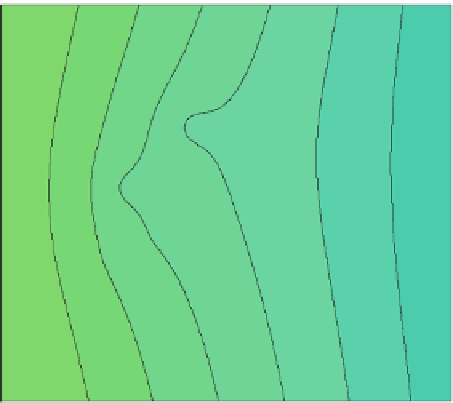Environmental Engineering Reference
In-Depth Information
5.4
5.2
150
5
100
4.8
50
4.6
0
4.4
-50
4.2
-100
0
50
100
150
200
250
300
Fig. 15.2 Groundwater flow towards three wells (is potential, streamlines and flowpaths)
15.2.1 The Doublette
A problem which is suitable for the application of the program concerns a
doublette
system. Such a system consists of a pumping well and a recharge well. More
complex installations with several recharge and discharge wells are not treated
here, although they can be simulated easily using the presented procedure. Such
systems are installed for several environmental purposes, for example, to extract
freshwater and simultaneously dispose waste water.
Doublettes are a typical set-up of geothermal technology. In geothermal facilities
hot water is pumped, usually from deep geological formations. In most applications
the pumped water has a high mineral content and can neither be used for other
purposes except for the use of heat, nor dumped into surface water bodies. Environ-
mental regulations often require the fluid to be suppressed back into the subsurface
region, from where it originates. The question of cold water breakthrough, which can
be answered by modelling, is important as it defines the lifetime of the facility.
Also for the clean-up of contaminated groundwater doublette well systems are
common. The pumping well takes the polluted fluid to a treatment station. After
purification the treated water is brought back into the aquifer by the recharge well.
Exercise 15.1. Model a doublette system with recharge and pumping well 100 m
apart from each other. Model a recharge and a discharge well with equal pumping
rates and assume no baseflow. How do isopotentials and streamfunctions look like?
As shown in Fig.
15.3
, the doublette flow pattern is symmetric in several
respects. One symmetry axis connects both wells and is a streamline. The other





















































































































































































































































































































